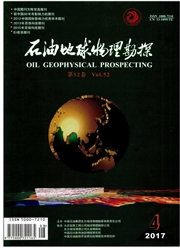

 中文摘要:
中文摘要:
四维地震监测技术已经被成功地应用于海上油田的管理中,但陆上油田成功实例较少。本文在认真分析储层条件、油藏条件、地震条件的基础上,指出了我国陆相薄互层油藏四维地震监测存在的问题,并给出了一些建议。研究认为,岩石物理研究和可行性论证是实施陆相薄互层四维地震监测试验的基础;提高四维地震资料的可重复性是关键;叠前地震属性的研究和应用是四维地震解释的主要发展方向;多波多分量地震技术是一个非常重要的工具;现阶段陆相薄互层油藏四维地震监测试验应首先着眼于稠油热采监测、注气或注CO2监测以及高孔隙未固结或固结较差的砂岩水驱开采监测。
 英文摘要:
英文摘要:
4-D seismic monitoring technique has been successfully applied in management of marine oilfields, but few cases showed the success of the method in land oilfields. On the basis of carefully analyzing the condition of reservoir and seismic condition, the paper pointed out the problems existed in 4-D seismic monitoring of continental thin and interbedded reservoir in China and presented some suggestions. The study considered that the petrophysical study and feasibility demonstration are the bases of implementing the 4-D seismic monitoring test of continental thin interbeddeds; improving repeatability of 4-D seismic data is the key; the study and application of prestack seismic attributes are major developed direction of 4-D seismic interpretation; multi-wave and multi-component seismic techniques are very important tools; current 4-D seismic monitoring tests of continental thin and interbedded reservoir should be first aimed at monitoring of heated heavy oils recovery, gas injection or CO2 injection recovery and water flood recovery for high-porous and unconsolidated or poor-consolidated sand.
 同期刊论文项目
同期刊论文项目
 同项目期刊论文
同项目期刊论文
 期刊信息
期刊信息
